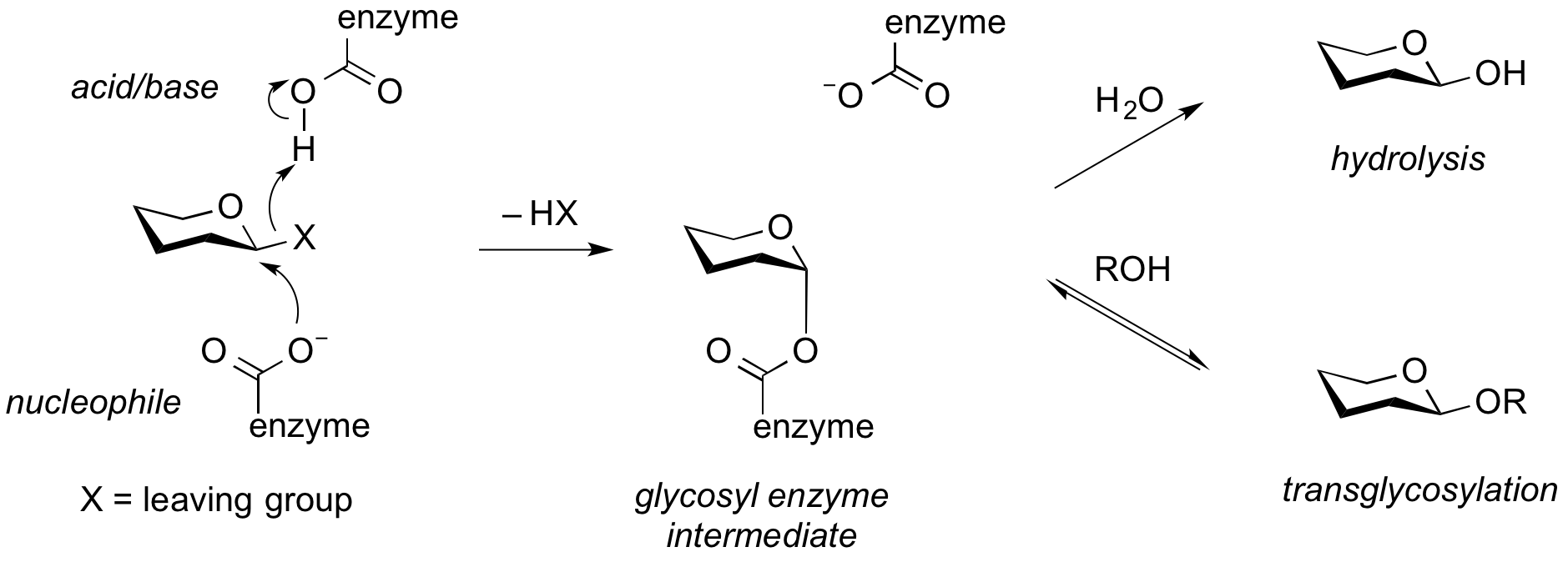CAZypedia needs your help! We have many unassigned GH, PL, CE, AA, GT, and CBM pages in need of Authors and Responsible Curators.
Scientists at all career stages, including students, are welcome to contribute to CAZypedia. Read more here, and in the 10th anniversary article in Glycobiology.
New to the CAZy classification? Read this first.
*
Consider attending the 15th Carbohydrate Bioengineering Meeting in Ghent, 5-8 May 2024.
Difference between revisions of "Transglycosylases"
| Line 8: | Line 8: | ||
| − | [[Image:transglycosylation.png|frame|Widthpx= | + | [[Image:transglycosylation.png|frame|Widthpx=200|centre|'''Generalized mechanism of a tranglycosidase. Enzymatic cleavage of a substrate through a classical [[retaining]] mechanism results in formation of a glycosyl enzyme intermediate. This can partition to react with either water to cause hydrolysis (glycoside hydrolase activity) or to an alternative acceptor, often a sugar, to cause transglycoidation (transglycosidase activity).''']] |
== References == | == References == | ||
Revision as of 21:21, 14 April 2013
This page is currently under construction. This means that the Responsible Curator has deemed that the page's content is not quite up to CAZypedia's standards for full public consumption. All information should be considered to be under revision and may be subject to major changes.
- Author: Spencer Williams
- Responsible Curator: Spencer Williams
Overview
Transglycosidases are a class of GH enzymes that can catalyze the transformation of one glycoside to another. That is, these enzymes catalyze the interchange of an aglycon of a glycoside. Mechanistically, transglycosidases utilize the same mechanism as certain retaining glycoside hydrolases. Some transglycosidases possess substantial glycoside hydrolase activity, and some glycoside hydrolases possess transglycosidase activity. Indeed, in many cases it is unclear what the major role of an enzyme that possesses both activities may be. Transglycosidases are classified as glycoside hydrolases into various GH families on the basis of sequence similarity.
